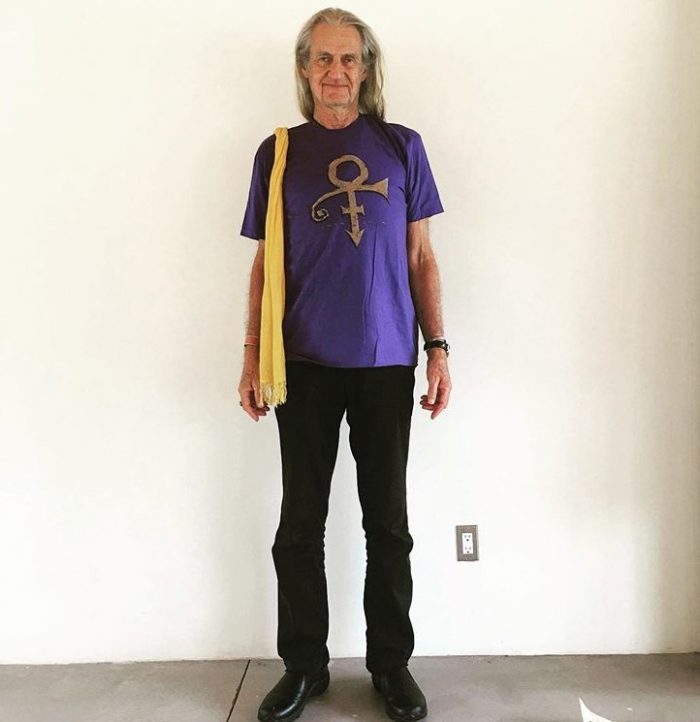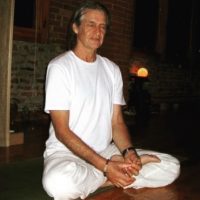The Flourishing of Relationship
Real Yoga is not a project to get somewhere, as if you are not somewhere. Such activity IS the denial of the feminine in search of future possibilities. We must come back into horizontal relatedness with all ordinary conditions and feel the wonder that is already our lives. Only then does relationship become possible. We relate to ourselves as the power of the cosmos, arising as pure intelligence and utter beauty, and can then recognise this in another and overlook their social patterning — their “imagined limitations.” We do not need to endlessly resolve or dissect our neuroses: we become utterly distracted by tangibly feeling the beauty of what is already right here. The precise technology of practice, as taught by Krishnamacharya, tailored to each individual, enables us to relate heart to heart rather than mind to mind. We learn to truly relate and bypass the social mess.
In its translation into the commodity driven west however, Yoga has been divorced from its core principles. Far from supporting our relational lives the popular brands and styles of Yoga sell a curious mixture of physical and spiritual gymnastics within the pervasive psychology of self-improvement. And so people are obsessively going to Yoga classes in an attempt to try and get somewhere as if they are not already the intelligence, wonder and beauty of Life itself.
To be frank, most of this activity is entirely narcissistic. To struggle within these disciplines takes our attention away from the given reality including others. Not only do people hurt themselves physically but they hurt their relational lives. We have been turned away from ordinary conditions in pursuit of a mythical state that never arrives.
Yet, there is a contest over the meaning of the word ‘yoga’. A lurking suspicion remains in the public mind that there remains something valuable in the Yoga tradition for them. We are fed up the commercial excesses of the wellness industry and are ready for the Yoga with a capital “Y.”
Intimacy is the Natural State
Professor T. Krishnamacharya (1888–1989) is the source scholar of modern Yoga. He rescued and communicated to the world what Yoga is and how it is adapted to individual needs. When the principles that Krishnamacharya brought forth are present then your Yoga becomes your direct embrace of reality itself and the related condition. Everybody is connected, priorly. Nobody is or can be separate from life or from one another.
Yet we all know the dysfunction of the social mind that is telling us that there is somewhere to get to; that places barriers to intimacy between people; that is convinced of separation and the fear which that entails. Yoga is necessary therefore to remove obstructions to intimate embrace and relax into the natural state. Asana and pranayama is not an end in and of itself but a temporary therapy that supports our participation in the related condition.
In the flow of breath, habitual obstructive patterns of mind and emotion are released. When we breathe well, we can feel strong and alert, and at the same time calm and relaxed. This is the best way to be in life. Yet we do not participate in the power of breath unless we are shown how. Emotions and experience have an intense effect on the body and breath. We always respond, be it in subtle or palpably visceral ways, to every experience we have. The key is not to react in the first place but to merge with your experience.
When we are merged with our experience then prana flows…the whole body integrated with its own experience is the natural state. If one is in relationship to another and stays connected then the pranas will flow. Ida and Pingala nadi will be clear and good. It is in relationship from life to life that prana expresses its own intelligence, movement and beauty. This skill unfolds through your daily practice.
But if one person is scared of the other or if one is reacting to their relatedness for whatever reason then obstructions form in the base of the body. As a result of our reaction to our experience little knots form in the muladara chakra. These knots impede the flow of prana in the system and make it harder to relate.
We then have do some tapas in order to clear the obstructions so we can come back to whomever it is we are with and re-enter the related condition.
Tapas
The word tapas tends to conjure images of Sadhus in India who hold up their hand in the air for thirty years without bringing it down. Tapas is usually associated with a suffering ordeal, or an endurance test, or to go through a cleansing fire of some sort. There is an aspect of truth in this image of fire, because the agni is there (the fire of life) and tapas is to lift the muladara chakra into that fire.
The actual meaning of the word tapas however is not suffering or endurance. The meaning is the removal of obstruction. And the principle means in Hatha Yoga of removing obstruction is the exhale and the retention after exhale that lifts the abdominals in and up, lifting the muladara into the agni, and burning up the blocks that have come into your nadi system through your reaction to experience.
Desikachar said, “Exhale is tapas.”
This is a beautiful understanding. The exhale removes what is not needed, and then the prana starts to flow and it has an effect for the whole body. The principle method is to lengthen the exhale in forward bends, twists and inversions.
Do not struggle away in the gymnastic brands and styles that have been popularized in the west. Learn the principles of actual practice and do your Yoga: your direct embrace of the nurturing mystery power of life. The more intimate you are with your own embodiment the more you will find a natural pleasure in relationship with people of all kinds.
- Receive a daily home Yoga practice that empowers your relational life — your connection to yourself and to those whom you love — with personal support and guidance in the 8-week, by-donation online immersion into the heart of yoga.







Read 0 comments and reply